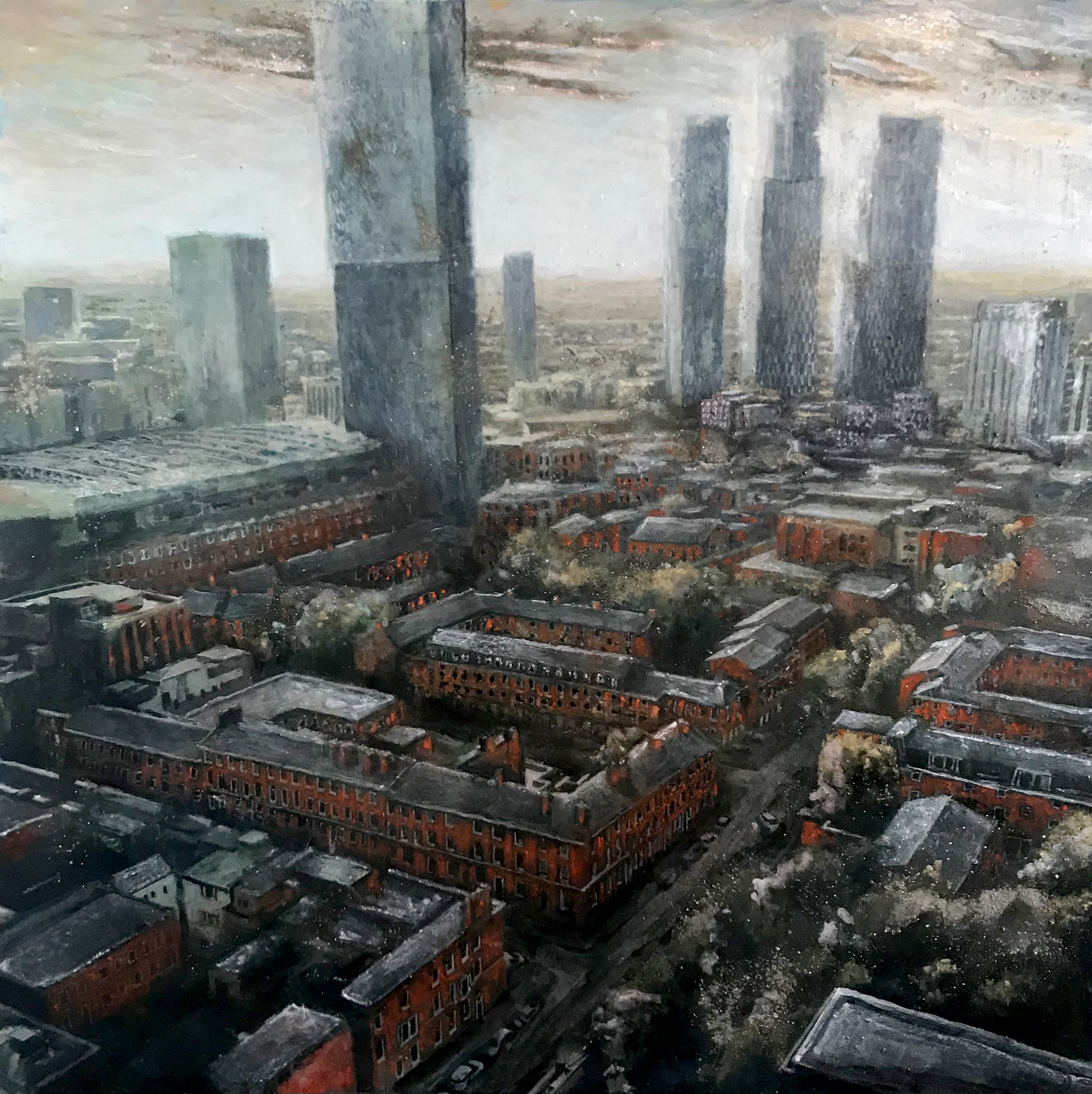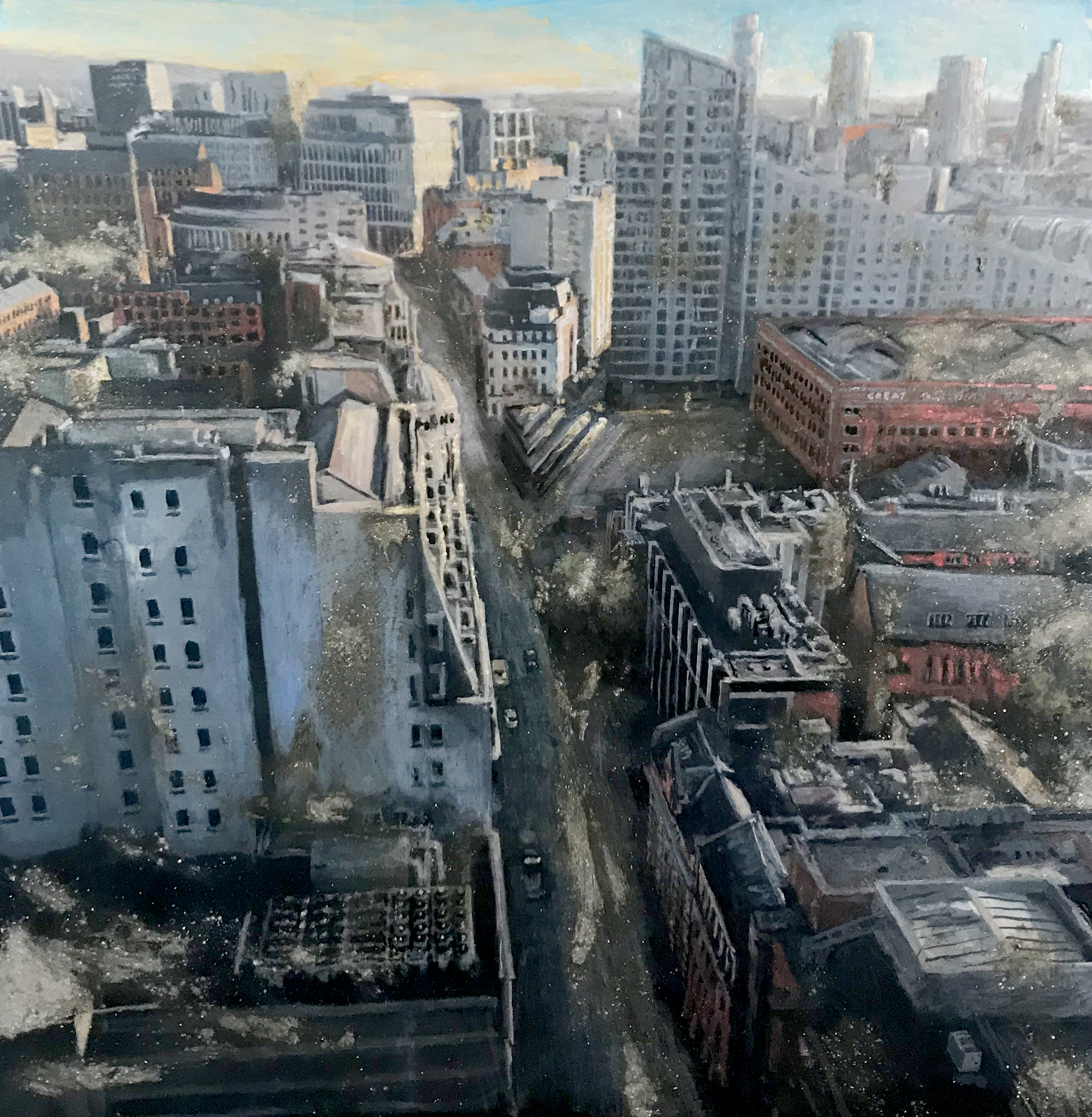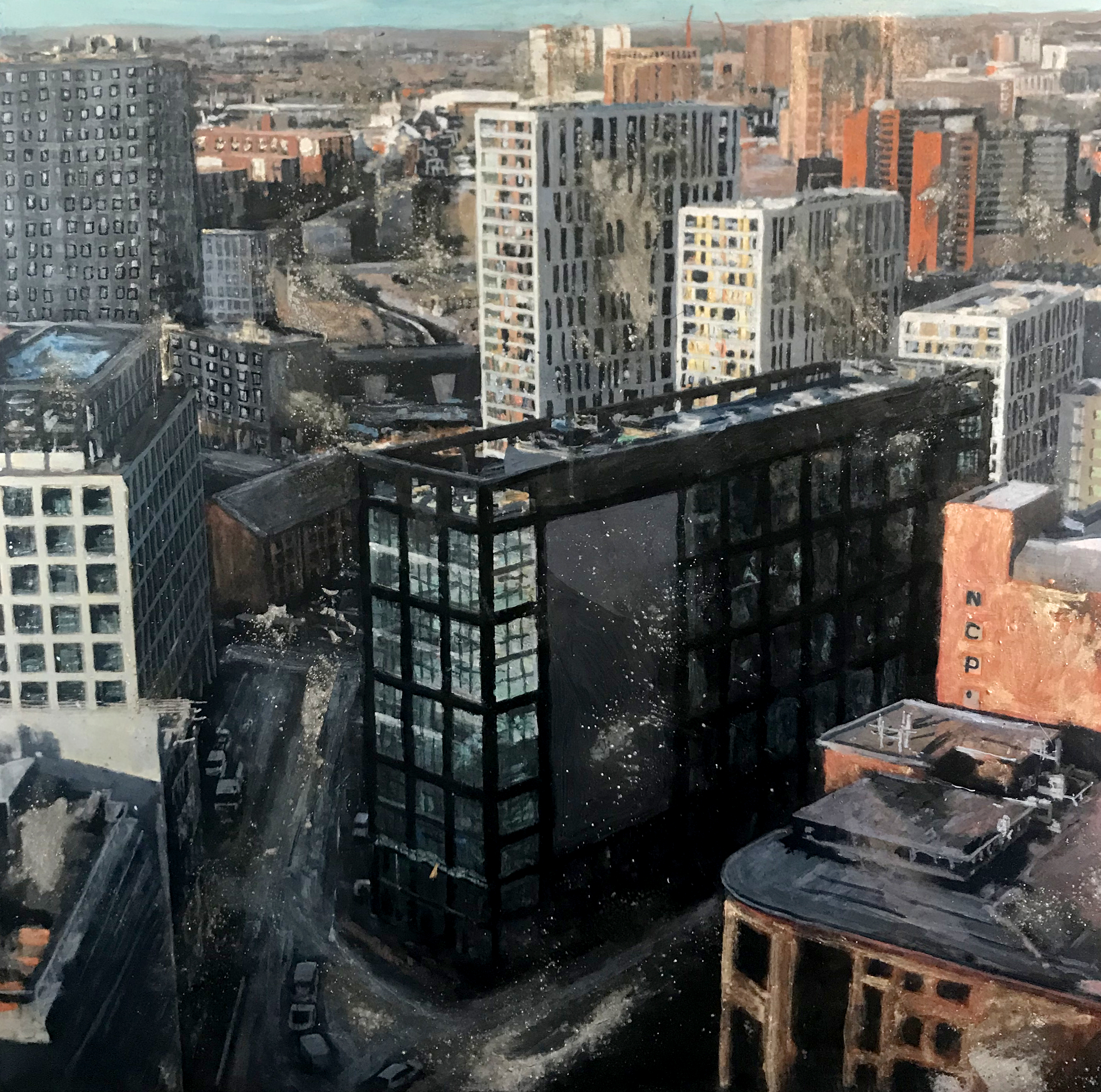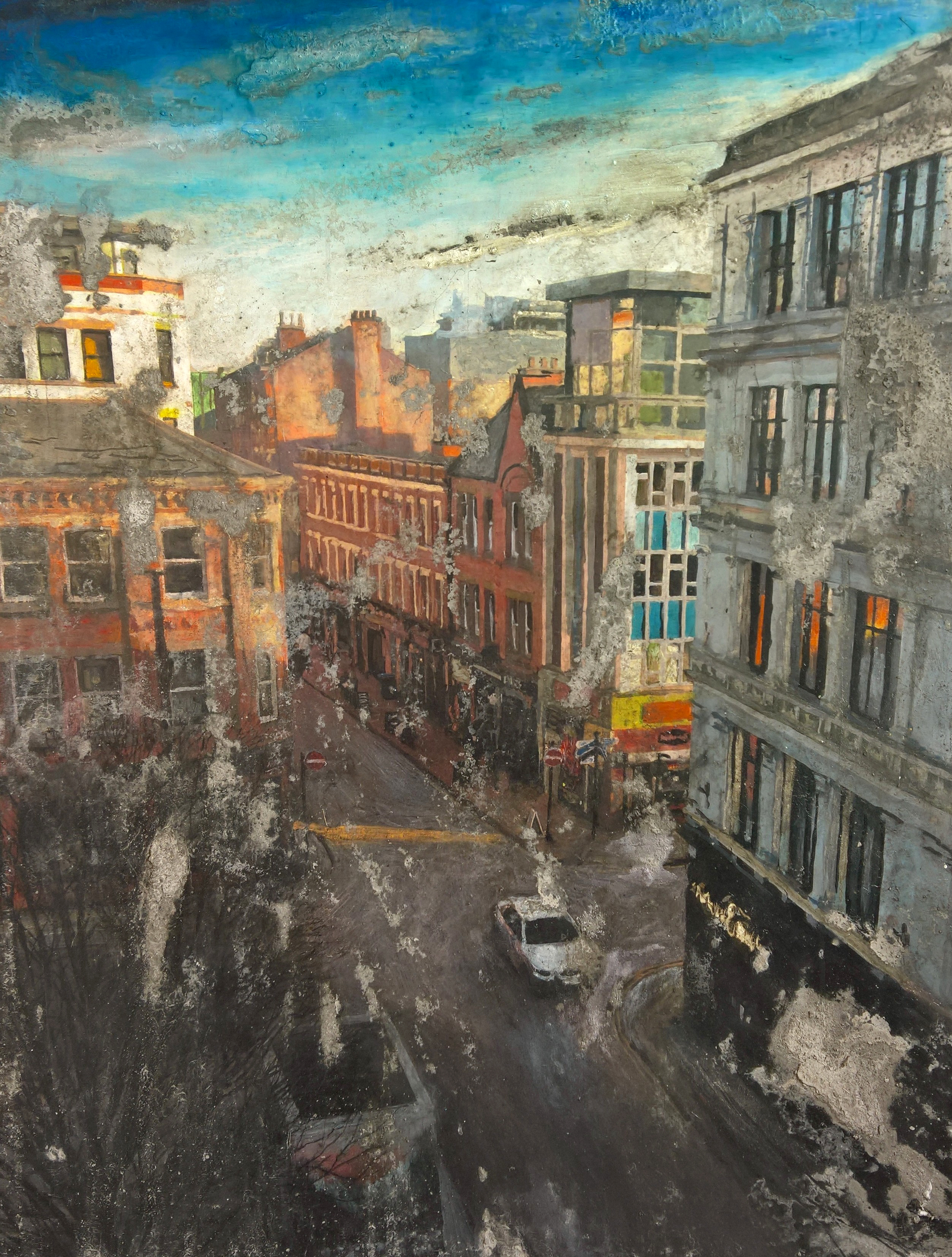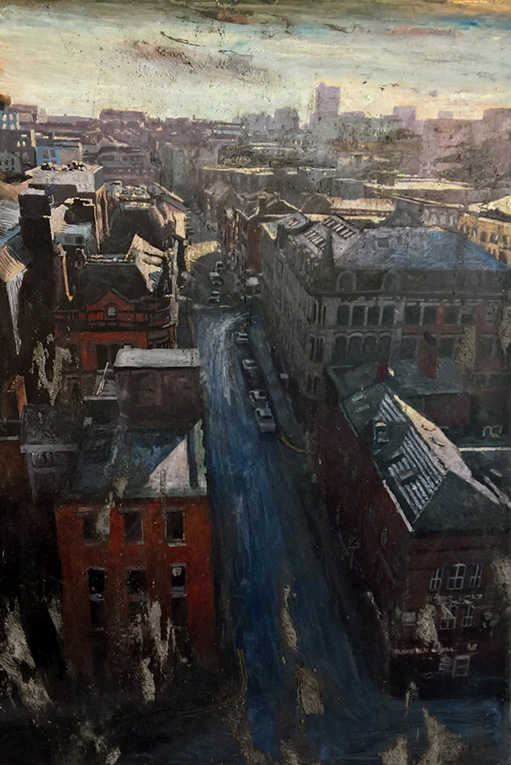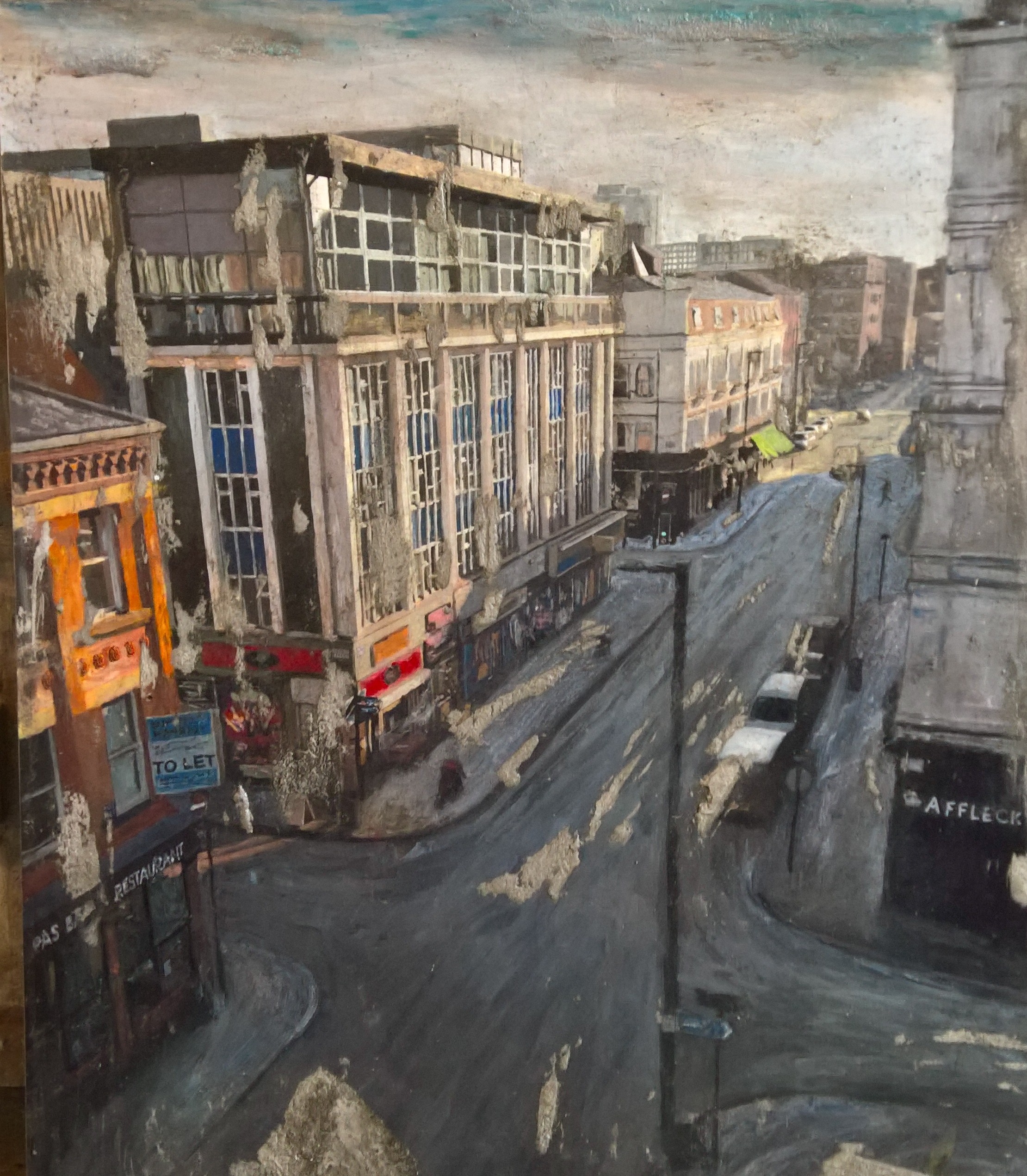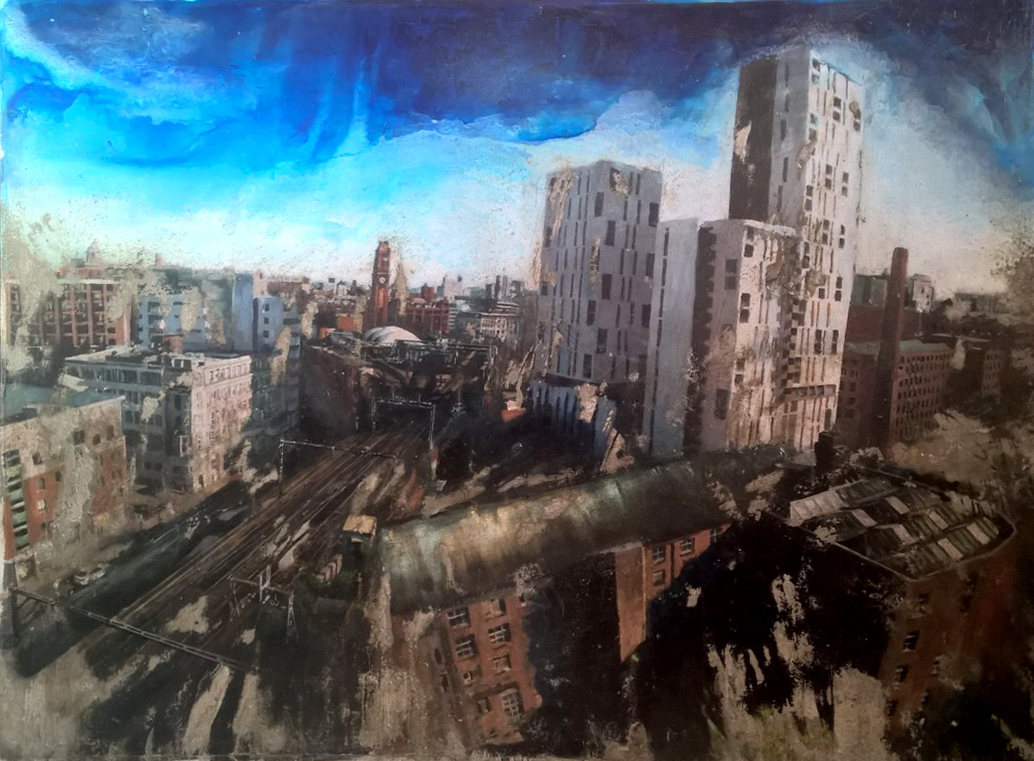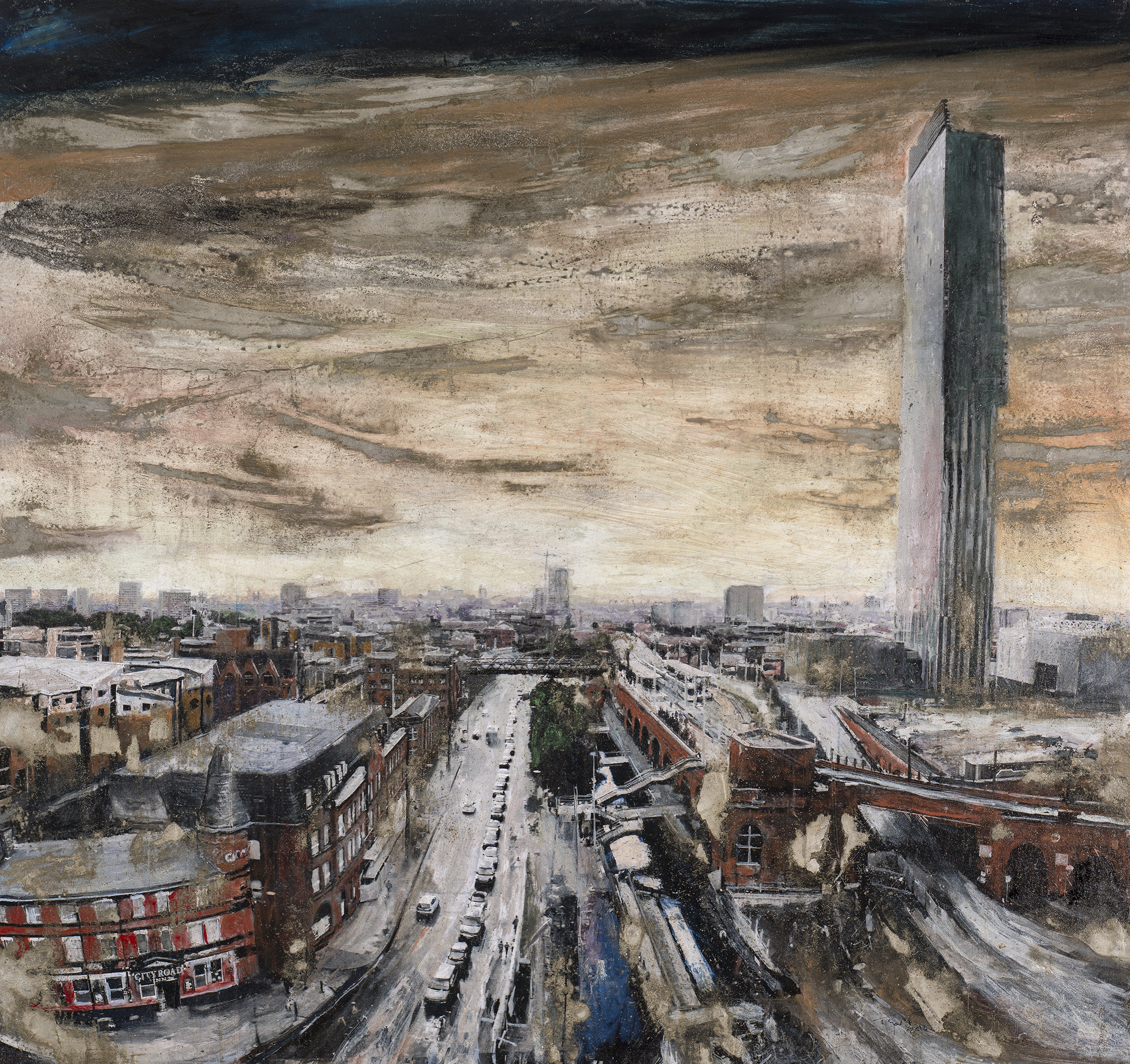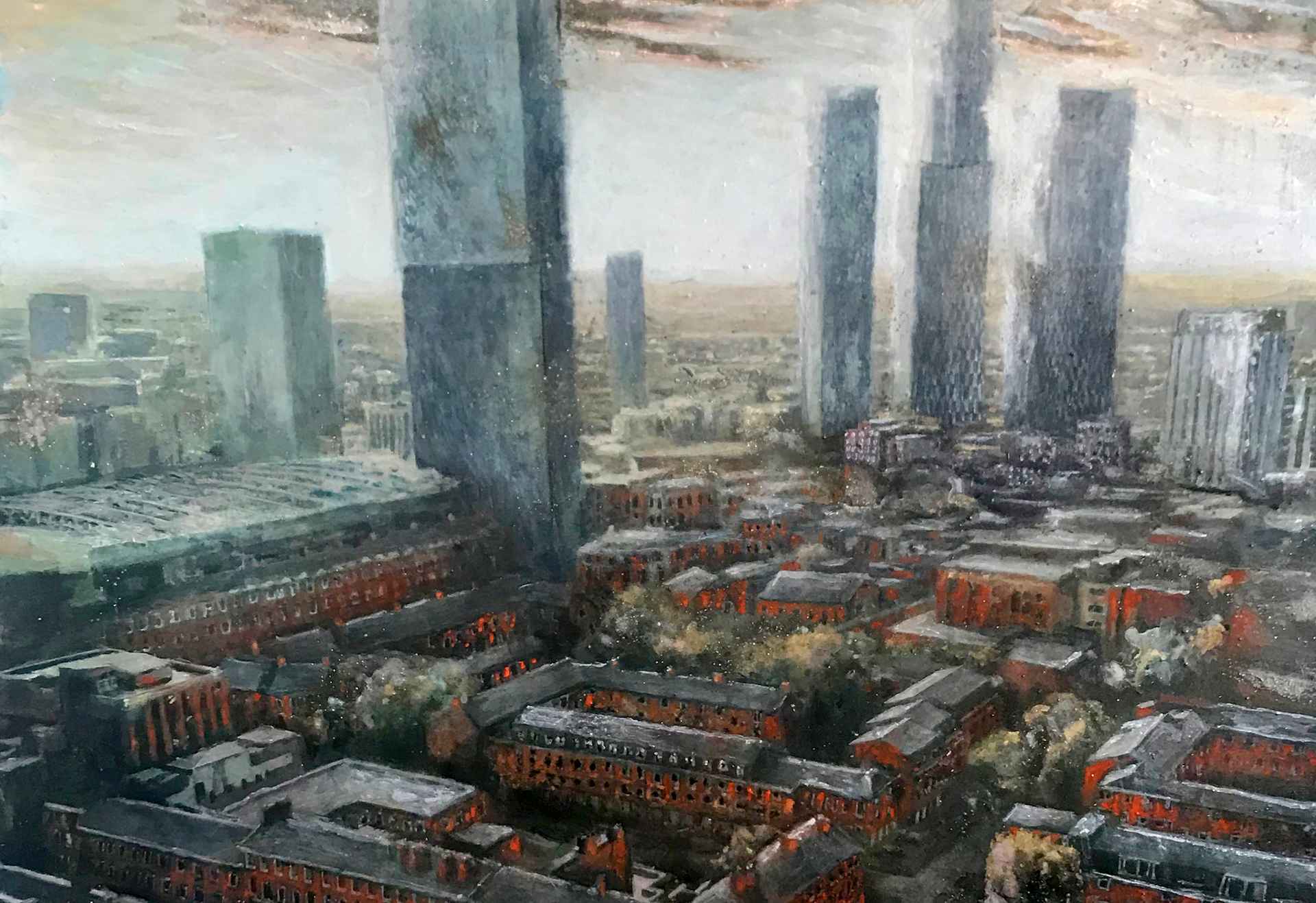
Manctopian Skyline: An Urban Reality
In recent years, the Mancunian populous has borne witness to the rapid development of Manchester's skyline, as towering orthogonal box skyscrapers sprout like bamboo shoots. Manchester is a quickly evolving city whereby, more so than ever before, contemporary, functional architecture competes with the traditional aesthetic stylings of industrial revolutionary expansionism.
In this moment of great structural change comes socio-political implications for the future of Manchester, calling to question the contingency of Manchester's historically significant class-conscious identity. Yet, as we become engrossed in the dynamism of urban life, we might overlook this competition between these 'anti-landmarks' of our city with which we have become so very familiar.
Tim Garner (b. 1964) offers in his paintings the reappraisal of Manchester's urban landscape and with that the space to engage in a collective appreciation of a city under massive architectural subversion. As a visual documentarian, creating paintings of the urban scene as authentically pertinent as the works of Adolphe Valette, Garner strives to capture in his artwork an unmitigated dose of the reality of Manchester's burgeoning skyline.
It is this truthfulness that allows us the capacity to review, re-evaluate, and understand the city at this momentous turning point in the history of its development.
In his most recent series of four paintings commissioned by distinguished Manchester-based law firm Fieldfisher, Tim Garner takes us on a panoramic lap of the No.1 Spinningfield office's seventeenth floor, providing an enchanting perspective: one where we may "float above the city", detached and peripheral, yet also one which speaks to our everyday experiences of the city's streets.
In conversation with Artzu, Tim Garner evaluates his own practice, his most recent, exclusive cityscape series, and on the unique artistic processes applied throughout his body of work which look to unveil a new vision of Manchester's urban reality.
There is a unique visual language in Garner's works; a language which has slowly evolved over time, accruing its structure from myriad mediums and sources. For instance, Garner initially found artistic merits in photography and its capacity to capture the "absoluteness" of the subject, yet he then identified how photographic work fails to consolidate sentimentality: "We assume photography is a kind of truth: we can all appreciate the 'realness' of what it's telling us. [...] But photography's not good at conveying emotion."
From this point of recognition that photography was not by itself "enough", Garner began to incorporate photography as part of a greater artistic process. Taking from his experiences at art school in the 1980s wherein attitudes regarding the physicality of the material were radically developing, Garner began experimentation with the manipulation of the surface of the image: "I want it as accidental and brutal as it can be [...] it became about taking bits away: cutting, scraping; allowing the accidents; the dark room stains; flash spots; sun spots."
From here comes the introduction of paints, and the construction atop the print's surface. Much like the building projects he observes in his paintings, Garner's paintings are patiently, ardently constructed over a long period of time. At times introducing hundreds of layers of different materials, from watery, thin transparent paints and acrylics, to more atypical materials such as powdered metallic pigments, finding the gleaming iridescence of the cityscape. It is a slow process of applying materials, fixing layers with aerosol adhesive and repeating dozens of times. After thirty to sixty layers, Garner's airy, light surfaces build up a considerable thickness with a potent subsequent visual effect:
"It allows the light to get in between the layers, and your picture's surface will shift over time."
The tonal qualities of a city change from morning to noon to night; in response to this quantifiable tonal shift, Garner's pieces' colours and hues appropriately interact with different lighting states.
We can find the culmination of Garner's meticulous process as well as a layered urban realism depicted as we look to Manctopian I. In a scene of juxtaposed architectural styles, we are positioned high above the tangle of traditional scarlet red terraced homes, yet the view is partially obscured by the contemporary residential towers which, like pillars, "hold up the sky". We are caught between these structural styles, amidst a moment of a literal uprising for a new Manchester. As we are affronted with this contrast, we are reminded to value the city's past, to ground us, to "help us to negotiate and live in the now" as we enter into a new age in civic history.
Furthermore, a recurring character within Garner's cityscapes is the powerful presence of the sky, with its dramatically consequential effect on the city scene's lighting. Acting as a malleable membrane for the artwork, the sky contains the observer's eye, which may become overwhelmed by the loud cacophony of the maze-like streets below. Guiding the eye to flow down through the grey Mancunian mist, the sky provides an aptly relieving counter-balance to the densely captured industrial upheaval. Equally, the attentive design of the sky directs the tone of the streets: the diffusion of light delivers a pragmatic dullness, yet the flourishes of both warm and cool tones that peek through the drizzling overcast sky diffract across rooftops and off glistening window panes. The terraces are offered a sparing dispense of light, with the shadows punctuating the rugged appearance of the complex network of Victorian streets.
Then, we might understand the painting's textured surface and its information of the tonal qualities of this scene. The clustered cement and metal pigment that envelopes the courtyards of the red-brick terraces harkens back to industrial portraits of Manchester, fetching a sense of harsh, metallic, spore-like smog clouds which dance heavily above the streets. By contrast, the brushed, scratched surface of the skyline and its skyscrapers grants a quick wind-sweeping sensation, imparting a lateral movement to the piece.
Woven together, these elements of crafted compositional contrasts, the delicate attention to the skies, and the extension of brittle tactility in the work, Garner finds a visceral legitimacy in an honest depiction of Manchester:
"I like to try and deal with what's there, in front of me, as an actual working city."
To enter the visual arena of a Tim Garner artwork is to be met with the contention of "organised chaos", whereby an entire city is constructed and then deconstructed, and the grand scope of information provided from aerial views of the city is played with incessantly. But amidst this chaos, from the intense process and uniquely developed visual languages, is a search for meaning:
"I'm trying to discover something, and help myself understand something that can expand the possibilities of a painting."
Perhaps, for Garner this exploration of materials and avant-garde deconstructionism is the search for a moment to understand this vibrant, ceaseless city. What is achieved, after all, in Garner's paintings is a specific experience of a city: an opportunity for discovery. The observer is provided the space to breathe, explore, to recount collective and personal histories of Manchester. Whether one is lost within the bustle of contemporary urban life or far from the madding Mancunian crowd, it is in Tim Garner's works where they may rediscover the imperfect yet forever invigorating 'Manctopia'.
To further rediscover the urban realities of Manchester through the avant-garde lens of Tim Garner:
Click here to see more of Garners' paintings

artzuFocus | Issue 006

